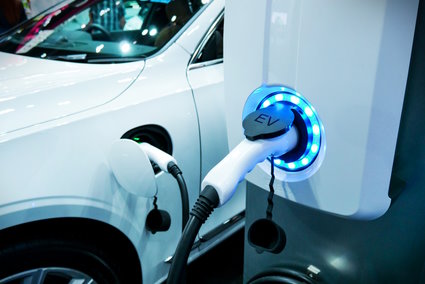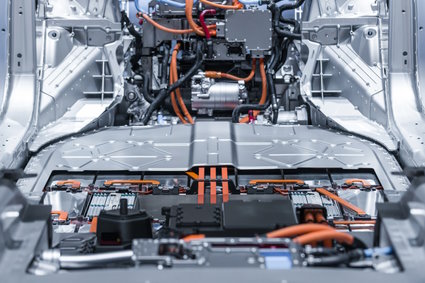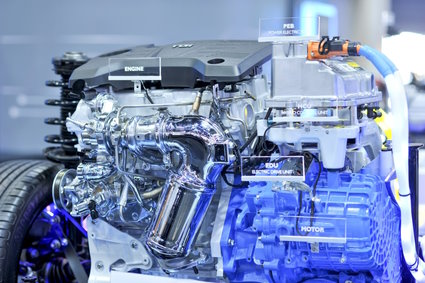Types of EV: benefits and differences
While Electric Vehicle (EV) uptake in Australia is currently lower than in other developed countries, the number of EVs on the road is growing and will continue to grow as lower cost models and more charging infrastructure is rolled out. The market as a whole needs to address the common concerns that people have regarding any type of EV including: battery life, recharging time, true environmental cost of the batteries and overall cost of ownership including resale values.
In the first part of this series of articles about EV technology, we look at EV types, their benefits and differences.
There are four main types of EV available: battery electric vehicles (BEV), plug-in hybrid electric vehicles (PHEV), fuel cell electric vehicles (FCEV) and non-plug-in hybrid electric vehicles (HEV).
Battery electric vehicles (BEV)
BEVs, also known as ‘plug-in’ EVs, are considered all-electric or full-electric vehicles, as they are powered exclusively by electricity and do not have an internal combustion engine (ICE). In these EVs, the electric motor draws current from onboard battery packs and the capacity of these battery packs determines the driving range. As they rely solely on electricity, they tend to have larger capacity batteries and kilowatt hour (kWh) outputs than HEVs or PHEVs. They have an external electrical charging outlet and the battery can be charged at a person’s property or a fast charging station, charging of the battery is also done by regenerative processes while the vehicle is in motion such as when braking.

BEVs are quiet, cost-efficient to run and eco-friendly, they also don’t produce any exhaust emissions when being driven however because of the additional battery size and associated onboard charging management system, they tend to be more expensive than other types of EV to purchase.
While BEVs typically have a shorter travel range per change than comparable conventional vehicles have per tank, newer models of EVs have an increasing travel range and the continued development of high powered charging equipment is reducing the gap. Travel range can also vary substantially based on a range of conditions including extreme outside temperatures, highway versus city driving and weight of the load.
Plug-in hybrid electric vehicles (PHEV)
PHEVs are powered by a combination of both fuel (either petrol or diesel) and an additional electric motor with a battery to store the energy, the battery is charged via a plug-in outlet or regenerative braking like a BEV, however they also have an internal combustion engine (ICE) that uses fuel, albeit at a lower consumption than conventional ICE powered vehicles. These typically run purely on electricity before the engine takes over, increasing the car’s travel range and lowering emissions. The travel range when running on electricity depends on the capacity of the battery.

There are two main configurations that can be used to combine the power from the electric motor and the ICE, parallel and series. Some PHEVs use transmissions allowing them to operate in either of these configurations, switching between them based on the driver profile.
- Parallel hybrid operation connects the engine and the motor to the wheels via a mechanical coupling which allows both to drive the wheels directly
- Series PHEVs use only the motor to drive the wheels while the engine is used to generate electricity for the motor. PHEVs using this configuration are commonly referred to as extended-range EVs. The motor drives the wheels almost all the time but the vehicle can switch to work like a parallel hybrid at highway speeds when the battery is depleted.
The advantage of a PHEV over a BEV is that the car switches to fuel to keep travelling if you can’t get to a charging point. This makes it a good option for those who want to move towards an EV but aren’t completely convinced to commit straightaway to a BEV. However, as it has two systems, maintenance costs can be higher and when the relatively small battery runs flat, the cost and environmental benefits are lost until it has been recharged.
A fully charged battery in a PHEV will typically be able to travel around 40-80km before it needs to be recharged, which is enough for most occasions for Australians and is a greater range than a non-plug-in hybrid EV. However, for those travelling greater distances regularly, the ICE will kick in after this distance and may not offer the same lower emissions benefits.
Despite the shorter travel distance capability, PHEVs will still offer some reduction in operating costs and fuel use relative to conventional vehicles whether they run on electricity some or all the time. There will also be some environmental benefit depending on how often it operated in all-electric mode.
Fuel cell electric vehicles (FCEV)
Unlike BEVs which use a battery, FCEVs use a stand-alone fuel cell or use a combination of a fuel cell with a battery or supercapacitor to power the electric motor. While BEVs store electrical energy taken from a charger, FCEVs create their own electrical charge through a chemical reaction that generally involves hydrogen. This means FCEVs don't require charging from the grid, but rather can be filled by hydrogen. However, those that incorporate a battery can also capture the energy of regenerative braking to use as a supplementary energy source for the fuel cell. As they are not externally charged, FCEV batteries tend to be smaller and lighter compared to BEVs, making them more favourable due to the difference in overall mass and load bearing capacity in the absence of a large battery.
FCEVs have the same advantages as other EVs such as being more efficient than conventional internal combustion engine vehicles and a fast refuelling time of around 3-5 minutes, as they are typically fueled by hydrogen, they have the additional benefit of usually have a greater travel range then BEVs, some current models are able to travel in excess of 700km between refuels.
Non-plug-in hybrid electric vehicles (HEV)
Like PHEVs, HEVs use a combination of electric motor and an ICE to power the vehicle. They use power from the electric motor when it is inefficient to use the ICE, such as when accelerating from a stop and at slower speeds, however will switch to using the ICE when it is more efficient to use, such as when travelling at highway speeds.
Rather than using an external plug to charge the vehicle, HEVs generate electricity through regenerative processes such as coasting or braking, a feature also used by other types of EVs. HEVs use traditional fuels such as petrol or diesel inside the ICE, making them less environmentally-friendly than other types of EV.

HEVs predominantly run with a conventional ICE and have a small battery which provides only a short range of ‘all electric’ capabilities.
HEVs are available as either mild or full hybrids, with full hybrids designed in series or parallel configurations.
- Mild (or micro) hybrids use a battery and electric motor to power the vehicle and can allow the engine to shut-off when the vehicle comes to a stop such as at a traffic light or stop sign. This type of HEV cannot be powered by electricity alone and are less fuel efficient than full hybrids however generally have lower upfront costs
- Full hybrids have a larger battery and a more powerful electric motor which can power the vehicle for longer distances at low speeds. While full hybrids cost more than mild hybrids, they generally have better fuel efficiency and lower emissions. Parallel and series hybrids for HEVs are designed in the same manner as PHEVs.
In the next article in this series, we take a deep dive into EV technology including energy storage systems and charging controllers, charging power requirements, plug types, charge rates and charging times including fast charging options.

